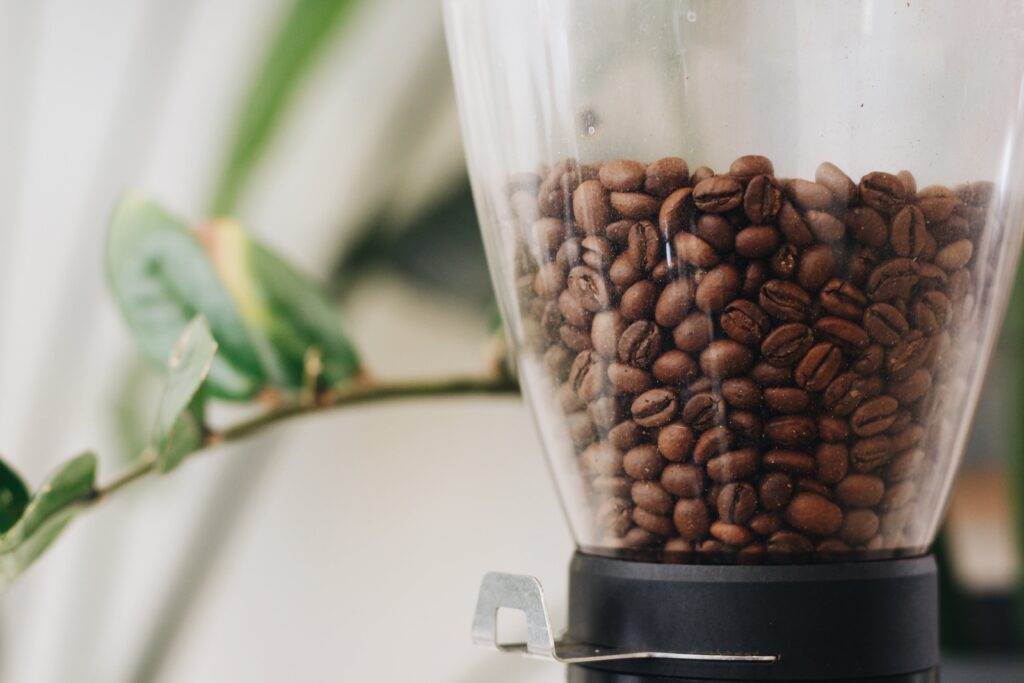In the world of coffee enthusiasts, grinding coffee beans is considered a crucial step in pursuing the perfect cup. The art and science of grinding coffee involve a delicate balance that can significantly influence the flavor and aroma of the final brew. In this article, we will delve into the various aspects of grinding coffee, from the types of grinders to the grind size and its impact on the brewing process.
Types of Coffee Grinders
Before we explore the nuances of grinding coffee, it’s essential to understand the different types of coffee grinders available on the market. There are primarily two types: blade grinders and burr grinders.
Blade Grinders:
Blade grinders are the more affordable and standard option for home coffee enthusiasts. They consist of a blade at the bottom of a rotating container. When the beans are placed inside, the blade chops them into smaller particles. While these grinders are convenient and cost-effective, they lack consistency in grind size, which can affect the overall flavor of the coffee.
Burr Grinders:
On the other hand, burr grinders are the preferred choice for serious coffee lovers. They utilize two abrasive surfaces, known as burrs, to grind the beans to a consistent shape. Burr grinders offer more control over the grind size and produce uniform particles, contributing to a more even extraction during the brewing process. There are II types of burr grinders: flat burr grinders and conical burr grinders, each with its advantages.
Grind Size Matters
The grind size of coffee beans is a critical factor that influences the extraction process and, consequently, the flavor of the coffee. Different brewing methods require specific grind sizes to achieve optimal results. Let’s explore the grind sizes commonly used for various brewing methods:
Coarse Grind:
Coarse grind is typically used for methods with longer extraction times, such as French press and cold brew. The larger particles prevent over-extraction, resulting in a well-balanced and full-bodied cup of coffee.
Medium-Coarse Grind:
This grind size is suitable for drip coffee makers with flat-bottomed filters. It balances the longer extraction time needed for drip brewing and a coarser grind to prevent over-extraction.
Medium Grind:
The medium grind is versatile and works well with drip coffee makers that use cone-shaped filters, pour-over methods, and Aeropress. It provides a balanced extraction, capturing the flavors of the coffee beans without overdoing it.
Medium-Fine Grind:
Ideal for methods like pour-over with a Chemex or siphon brewing, the medium-fine grind allows for a slightly faster extraction while maintaining a nuanced and well-balanced flavor profile.
Fine Grind:
Espresso machines and Moka pots require a fine grind to facilitate the quick extraction of these methods. The fine particles maximize the surface area in contact with water, resulting in a concentrated and flavorful shot of espresso.
Understanding the Impact of Grind Size on Flavor
The grind size directly influences the surface area of coffee exposed to water during the brewing process. A finer grind increases the surface area, promoting a quicker extraction, while a coarser grind slows the process. The interaction between water and coffee grounds is a delicate dance that affects the final cup’s flavor, acidity, and body.
Extraction Time and Over-Extraction:
- Grinding coffee too finely for a particular brewing method can lead to over-extraction, where the flavors become bitter and astringent. On the contrary, a grind that is too coarse might result in under-extraction, yielding a weak and sour cup of coffee. Finding the right balance ensures a harmonious extraction, bringing out the nuances of the coffee beans without overpowering bitterness or acidity.
Flavor Complexity:
- The grind shape also plays a role in unlocking the complex flavors present in coffee beans. The intricate dance between water and coffee grounds allows for extracting the beans’ unique characteristics, including notes of fruitiness, chocolate, floral undertones, and more. Experimenting with different grind sizes allows coffee enthusiasts to discover the full spectrum of flavors hidden in their favorite beans.
In the world of coffee, the journey from whole beans to a delightful cup is a nuanced process that requires attention to detail. Grinding coffee is a crucial step in this journey, and understanding the impact of grind size on flavor is critical to mastering the art and science of brewing. Whether using a blade grinder for its convenience or opting for the precision of a burr grinder, each choice influences the final result in the cup.
As coffee enthusiasts embark on their quest for the perfect cup, experimenting with different grind sizes and brewing methods becomes a delightful exploration of flavors and aromas. The beauty of grinding coffee lies in the balance between science and art, where precision meets creativity, and each cup becomes a unique expression of the beans, the grind, and the brewing process.

